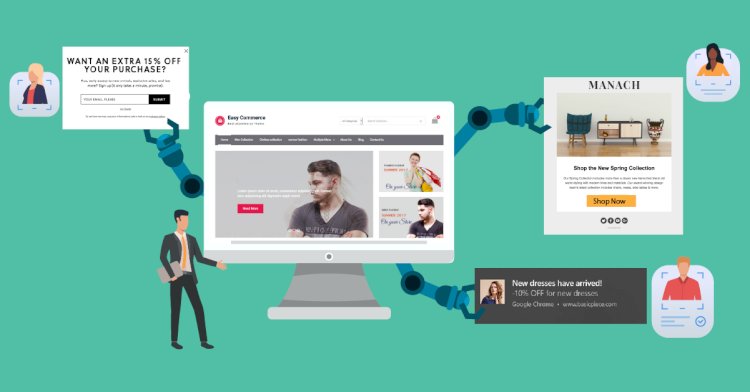Enhancing Customer Engagement in E-commerce through Behavioral Automation.
This article explores the concept of behavioral automation and its potential for enhancing customer engagement in the realm of e-commerce.

In today's digital era, the success of an e-commerce business hinges on its ability to engage customers effectively. As the competition grows fiercer, businesses are continuously seeking innovative ways to captivate and retain customers. One such strategy gaining momentum is behavioral automation, which leverages data-driven insights and personalized interactions to create meaningful customer experiences. This article explores the concept of behavioral automation and its potential for enhancing customer engagement in the realm of e-commerce.
Understanding Behavioral Automation
Behavioral automation involves using technology and data analysis to automate customer interactions based on their behaviors, preferences, and purchase history. By analyzing a customer's online activities, such as browsing patterns, search queries, and previous purchases, businesses can tailor their marketing efforts and communication to deliver more relevant and timely messages.
Personalized Recommendations
One of the key benefits of behavioral automation in e-commerce is its ability to provide personalized recommendations to customers. By tracking and analyzing customer behaviors, businesses can gain valuable insights into their preferences and interests. This data can then be utilized to suggest products or services that align with the customer's individual tastes, increasing the likelihood of conversion and driving repeat purchases.
For example, if a customer frequently searches for running shoes on an e-commerce platform, behavioral automation can automatically display related products or send personalized email recommendations for running gear. By presenting customers with tailored options, businesses can enhance the shopping experience and foster a sense of connection, ultimately leading to increased customer satisfaction and loyalty.
Triggered Messaging and Notifications
Another powerful application of behavioral automation is the use of triggered messaging and notifications. When a customer engages in specific actions or reaches certain milestones, automated messages can be sent to provide timely and relevant information.
For instance, if a customer abandons their shopping cart without completing the purchase, behavioral automation can trigger an automated email or push notification offering a discount or reminding them to complete their transaction. Similarly, when a customer makes a purchase, an automated confirmation email can be sent, along with suggestions for complementary products or an invitation to join a loyalty program.
By delivering messages at the right time and in a personalized manner, businesses can drive customer engagement, recover potentially lost sales, and build long-term relationships with their customers.
Segmentation and Customer Journey Mapping
Behavioral automation allows businesses to segment their customer base and map their journey through the sales funnel. By analyzing customer behaviors, businesses can identify distinct groups with similar interests, preferences, or purchase patterns. This segmentation enables targeted marketing campaigns and personalized communication based on specific customer segments.
For example, customers who have previously made purchases in the "home decor" category can be identified as a distinct segment. Behavioral automation can then be used to send targeted emails showcasing new home decor arrivals or offering exclusive discounts on related products.
Furthermore, by mapping the customer journey, businesses can identify the touchpoints where customers tend to drop off or show signs of disengagement. Automated interventions can be implemented at these critical junctures to re-engage customers and guide them towards completing their desired actions.
Conclusion
Behavioral automation offers tremendous potential for e-commerce businesses to enhance customer engagement, drive conversions, and build lasting relationships. By leveraging data-driven insights, businesses can deliver personalized recommendations, trigger timely messaging, and segment their customer base effectively. The ability to automate these processes not only saves time and resources but also allows businesses to provide seamless and relevant customer experiences at scale.
In this dynamic digital landscape, adopting behavioral automation strategies can give e-commerce businesses a competitive edge by fostering stronger customer relationships, increasing customer satisfaction, and driving long-term growth. Embracing this technology-driven approach is key to staying ahead in the ever-evolving world of e-commerce.
Go to Home Page
Click Here To See More
What's Your Reaction?


























